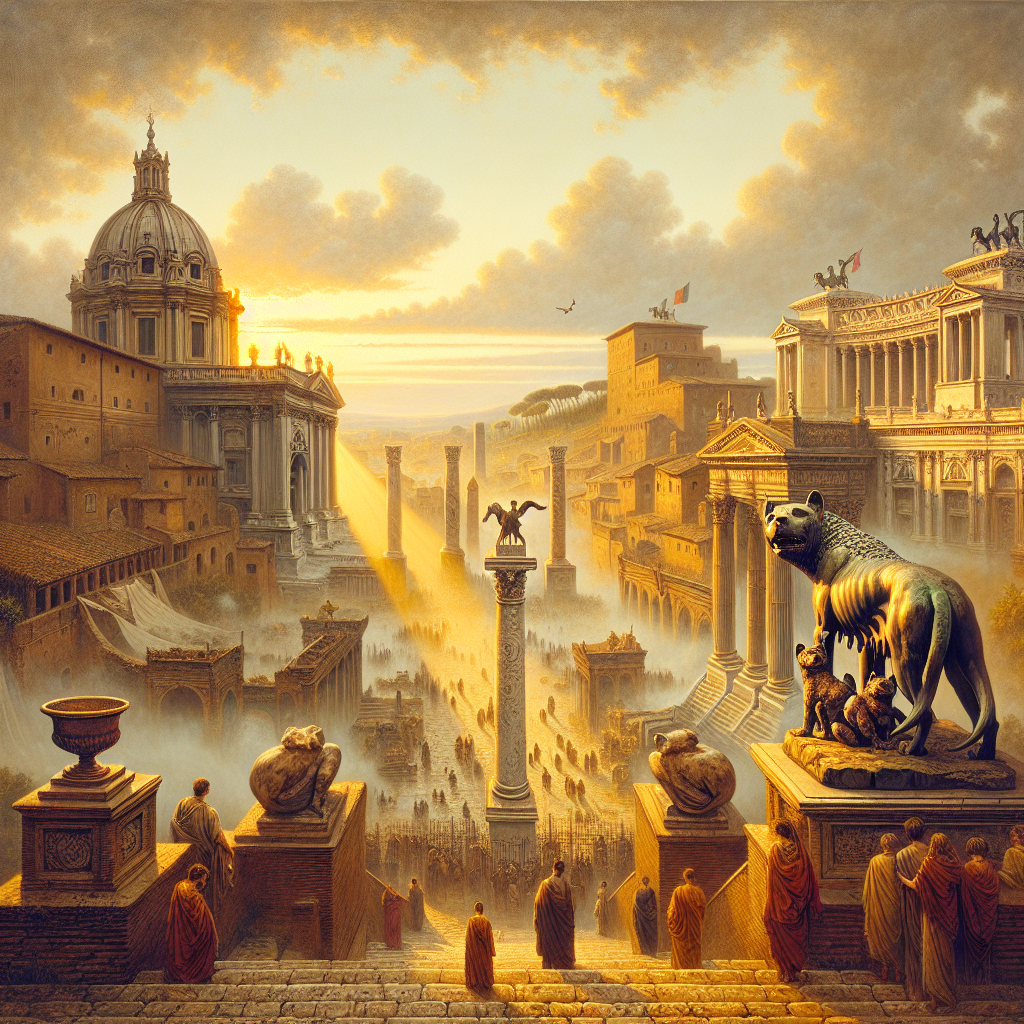
Could the Roman Empire Come Back? Exploring the Legacy and the Odds of Revival
Imagine a world where the Roman Empirethe first Roman Empire that once stretched across continents is restored to its former glory. Its a thought that sparks curiosity and even a bit of awe. After all, Rome wasnt just an empire; it was a civilization that shaped law, language, culture, and governance in ways still felt today. But could such a titan really rise again? The answer is far more complex than a simple yes or no.
The Rise and Fall of the First Roman Empire: Lessons Written in Stone
The first Roman Empire wasnt built overnight. It took centuries of warfare, smart diplomacy, and sheer ambition to grow from a city-state into an empire stretching across much of Europe, North Africa, and parts of the Middle East. Think of it as a giant puzzle: economic strength, military power, political savvy, and cultural blending all had to fit perfectly.
But like any great puzzle, cracks began to show. Economic troubles, overexpansion, internal political fights, and constant pressure from outside forces slowly wore it down. The mighty empire fragmented, unable to hold its vast lands together. This collapse wasnt just a hiccup in history; it was a major transformation that paved the way for new nations and fresh political ideas.
Why a Literal Comeback Is Simply Unfeasible
So, could the Roman Empire literally return? The short answer is no. The world today is nothing like it was in Romes heyday. Modern countries operate under political systems and rules that dont fit with ancient imperial ways. Borders exist because of centuries of diplomacy, war, and cultural changesnot because of brute force and conquest alone.
Plus, our global political landscape is a complex network of independent countries, international laws, and alliances. Trying to bring back the Roman Empire as a political power would be like forcing a square peg into a round hole.
But Heres the Twist: The Roman Empire Never Truly Left
Though the political empire cant come back, its spirit and influence are more alive than ever. The legacy of the first Roman Empire runs through our lives in both obvious and subtle ways. From the legal systems that protect our rights to the architecture that decorates cities, Romes mark is everywhere.
Look at the grand arches of government buildings or the many languages we speak, filled with Latin roots. Even the ideas of citizenship and civic dutyconcepts Rome helped pioneerare still foundational today. These arent relics gathering dust; they are living parts of our cultural DNA.
When Culture Echoes Empire: Modern Movements and Roman Symbolism
Why does Roman imagery still hold such power? Symbols like the eagle, the laurel wreath, or the story of Romulus and Remus tap into something deeply human a desire for order, strength, and identity. Many modern movements draw inspiration from Roman traditions, not to rebuild the empire but to channel its lasting ideals.
Its a reminder that the dream of Rome isnt about physical conquest. Its about ideals like good governance, justice, and cultural pridevalues people still find meaningful. This is cultural revival, not empire-building.
The Allure of the Capitoline Wolf: A Symbol That Stands the Test of Time
Speaking of Romes lasting symbols, the story of Romulus and Remusthe mythical twins raised by the Capitoline Wolfis one of the most powerful images tied to Romes foundation. This tale is a metaphor for resilience, survival, and the birth of great civilizations.

If you feel connected to this slice of history, consider carrying a subtle reminder of that legacy a fine enamel pin featuring the Capitoline Wolf. Its a quiet nod to the past, a conversation starter about endurance and power without shouting it from the rooftops. Curious? Heres a beautiful example you can check out: https://signumstore.com/products/capitoline-wolf-enamel-pin-romulus-remus.
Why Reflecting on Romes Legacy Matters Today
You might wonder, why bother thinking about an empire that fell centuries ago? Because understanding the past helps us navigate the present wisely. Romes story teaches us about the dangers of overreach and the need for balanced governance. It shows how cultural blending can both strengthen and challenge political unity.
We dont revive the Roman Empire by redrawing maps. We do it by embracing the lessons from its rise and falland by recognizing how it quietly lives on in our world.
The Roman Empires Enduring Footprint
To wrap it up, the idea of physically bringing back the first Roman Empire is a fantasy far removed from political reality. Still, in law, language, architecture, and art, Romes influence is huge. The empires spirit, if not its borders, endures.
Its not about conquest anymoreits about cultural influence, a blueprint for how civilization evolves, not a literal political goal.
So, next time you walk beneath stone arches or use words rooted in Latin, remember: youre stepping into a world shaped long ago by an empire that, while gone, never really left us.
For those who want a small piece of this timeless story, take it with pride. Perhaps a delicate pin of the Capitoline Wolf is the perfect token a subtle way to hold history close.
Discover this piece here: https://signumstore.com/products/capitoline-wolf-enamel-pin-romulus-remus.
---
The Roman Empire may never return as a grand political power, but it will always be part of the rich tapestry of history, culture, and human dreams. And isnt that a kind of immortality worth celebrating?
Could the Roman Empire literally return as a political power?
No, the literal return of the Roman Empire as a political power is unfeasible due to modern political systems, international laws, and complex global relationships.
How does the legacy of the first Roman Empire live on today?
Its legacy lives on through legal systems, languages with Latin roots, architecture, citizenship concepts, and cultural symbols that influence modern society.
What is the significance of the Capitoline Wolf symbol?
The Capitoline Wolf, depicting Romulus and Remus, symbolizes resilience, survival, and the foundation of Rome, serving as a powerful cultural icon still celebrated today.

